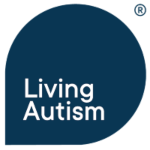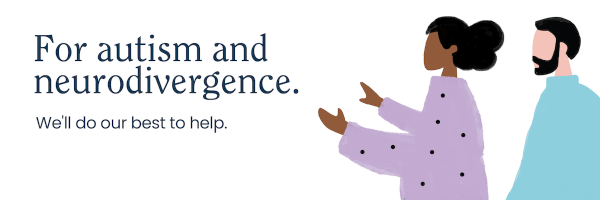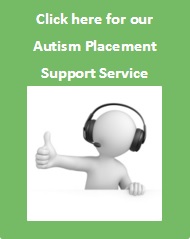Autism is a word which covers a range of conditions, called Autistic Spectrum Disorder, which indicate a different way of experiencing the world. The conditions can cause difficulties and impairments, but can also manifest in many skills and abilities. Autistic Spectrum Disorder (ASD) is a term that covers Autistic Spectrum Disorder, Asperger’s Disorder, Childhood Disintegrative Disorder and PDD-NOS. This new overarching term forms the basis of diagnosis according to DSM 5 (2013), a diagnostic manual for professionals. You can read more about DSM 5 and its impact on the diagnosis of autism conditions here.
In the main, people with autism experience differences in the way they communicate socially and their behaviour can be repetitive and narrowly focused. They also experience sensory differences and they can sometimes feel isolated, anxious and misunderstood.
People with autism present a wide range of characteristics and severity of difficulties, as well as particular skills. Some are seemingly able to carry on with every-day life while others can experience disabilities which make it very difficult to take part in every-day experiences. Because of the range of conditions which display similar characteristics of difficulties with social communication skills and imagination, the conditions are collectively known as ‘Autistic Spectrum Disorder’. In this article, we use the term autistic spectrum conditions, to highlight the fact that the differences in experiencing the world can be both disabling and also empowering through skills and qualities.

Some people with Autistic Spectrum Conditions can also have a learning disability or other co-morbid conditions such as epilepsy and OCD. Others have no learning disability and can be of above normal intelligence. Those without a learning disability were previously diagnosed with Asperger’s Syndrome.
What are the characteristics?
Each individual with autism will be affected by the condition in different ways. However, some challenges are common across the autism spectrum. These two most commonly presented symptoms are sometimes referred to as the ‘Dyad’ of difficulties:
- difficulties with social communication
- difficulties in flexibility of thought – fixated interests, repetitive behaviours, sensory differences
It is important to note that while presenting challenges for autistic people, the condition also enables some people to have specific and unusual abilities or skills.
Difficulties with social communication
 Individuals on the autistic spectrum can have great difficulty in understanding the social rules that are the norm for the rest of us. Some autistic individuals may have little or no speech and they may repeat phrases without understanding them. Many people with autism can be very literal and can be confused by phrases such as “raining cats and dogs” or “full of beans”. Frequently there is no understanding of humour. Speech itself may sound mechanical or expressionless.
Individuals on the autistic spectrum can have great difficulty in understanding the social rules that are the norm for the rest of us. Some autistic individuals may have little or no speech and they may repeat phrases without understanding them. Many people with autism can be very literal and can be confused by phrases such as “raining cats and dogs” or “full of beans”. Frequently there is no understanding of humour. Speech itself may sound mechanical or expressionless.
Individuals can experience difficulty in understanding facial expressions or body language and might not recognise when they have lost the interest of the listener.
Those without a learning disability may have a full range of vocabulary but might still not understand the rules of taking turns to speak and to listen.
Misunderstandings during social times at college or at work, such as breaks and lunchtimes, can lead to bullying and anxiety.
Some autistic people might not understand that other people think differently to them and some cannot relate to someone else’s happiness or sorrow. They can appear to say what they think with no regard to how it makes the listener feel.
They may have little or no eye contact with others and behave as though they do not exist and are frequently described as “living in a world of their own.” A person with autism may not respond to the normal shows of affection such as cuddling; alternatively, people without a learning disability may be excessively polite; have learned to shake hands or hug but cannot determine when and for how long. They may learn the rules of social interaction without understanding them.
Impairment in understanding social interaction can cause substantial anxiety to people on the autism spectrum. They might experience some of the following difficulties:
- Difficulty in understanding unwritten social rules
- Difficulty in understanding personal space
- Difficulty in recognising how someone else is feeling
- Appear to behave inappropriately in public
- Shy away from the company of others
- Difficulty in knowing how to make friends
- Difficulty in understanding or using different tones of voice
- Difficulty in understanding jokes or sarcasm
- Taking things literally and misunderstanding idioms, eg: “It is raining cats and dogs”
- Difficulty in understanding slang, e.g. ‘cool’ or ‘pants’
People with autistic spectrum conditions often have particular strengths in:
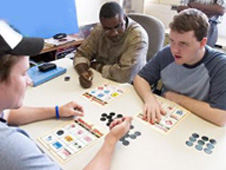
- Following instructions
- Abiding by rules
- Being direct, open and honest
- Excellent memory
- Copying, imitating and mimicking
- Attention to detail
- High levels of vocabulary
- Precise use of grammatical language
- Clear, concise, and accurate communication
Problems with flexibility of thought
 Many individuals display repetitive and idiosyncratic behaviour (this is known as stereotyped behaviour). The lives of people on the autism spectrum need to be predictable and the individual may become very anxious or even aggressive if change is introduced without warning.
Many individuals display repetitive and idiosyncratic behaviour (this is known as stereotyped behaviour). The lives of people on the autism spectrum need to be predictable and the individual may become very anxious or even aggressive if change is introduced without warning.
Routines are very important. Many people with autism use lists to prompt them about what comes next and the need for the list continues even when those around them think the individual knows the task well. It is common for people with autism to have a keen interest in a particular subject in which case they will research the subject thoroughly.
They might experience the following difficulties.
- Difficulty in predicting what will happen next, eg coming back home after going shopping.
- Difficulty in understanding the concept of danger and consequences, eg: crossing the road.
- Difficulty in using imagination and trying out something new.
- Difficulty in planning for the future
- Difficulty in coping with unfamiliar situations
These individuals may be more likely to be adept at:
- Sticking to structured programmes
- Working on projects with a clear beginning, middle and end
- Mathematical and technical abilities
Abnormal sensory responses
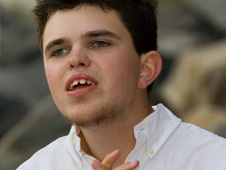 In addition to the ‘Dyad’ of differences, autistic people can have overactive or underactive senses. They might be oversensitive to certain sounds, bright lights, textures, colours and tastes. On the other hand, they might have a very high threshold of pain and appear to not hear what someone is saying, nor see what someone is pointing out.
In addition to the ‘Dyad’ of differences, autistic people can have overactive or underactive senses. They might be oversensitive to certain sounds, bright lights, textures, colours and tastes. On the other hand, they might have a very high threshold of pain and appear to not hear what someone is saying, nor see what someone is pointing out.
An individual with autism might also experience difficulties with spatial awareness and with balance. This means that rooms might feel smaller or larger than they actually are. It can also explain why some people with autism might rock, sway or spin.
Some behaviours an individual with autism might display:
- Covering ears
- Flapping fingers
- Rocking, swaying or spinning
- Refusing to put on certain clothes
- Refusing to eat foods of a certain colour
These behaviours may manifest themselves in the following ‘positive’ characteristics:
- Seeing and remembering small details
- Acute auditory memory
- Discriminatory sense of smell and taste
- Acute sense of balance
Each autistic person will experience different levels of the above challenges and strengths. Some will experience certain challenges, others might experience a different set of difficulties altogether. Therefore, any support intervention or approach must put the individual’s specific challenges, strengths, needs and wishes at the centre of any support programme.
